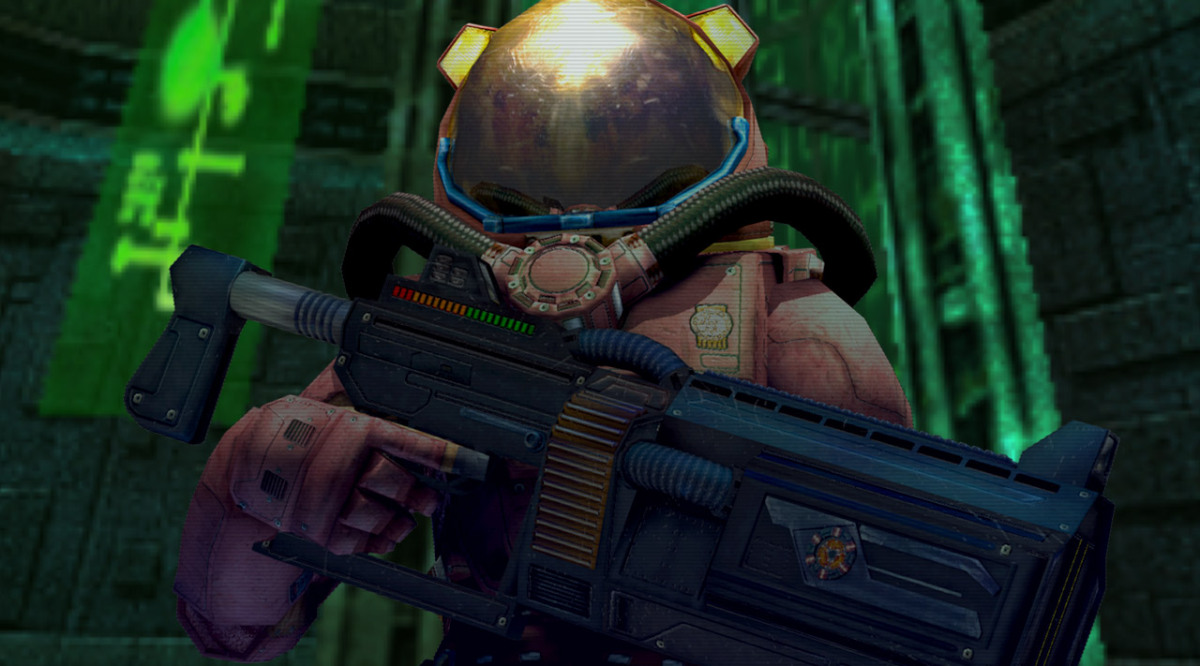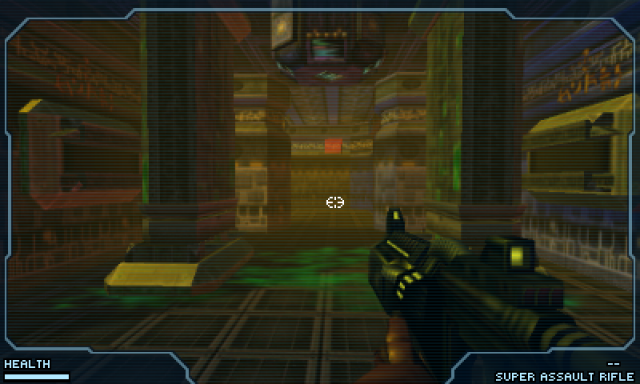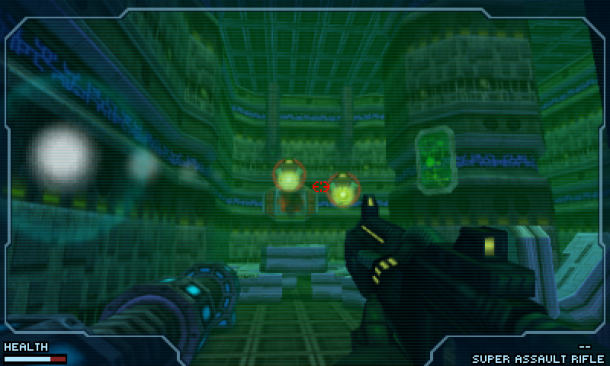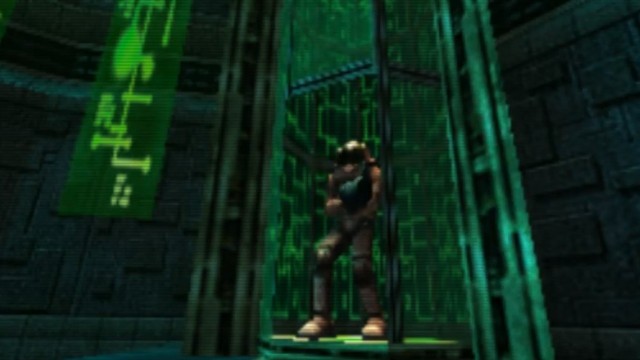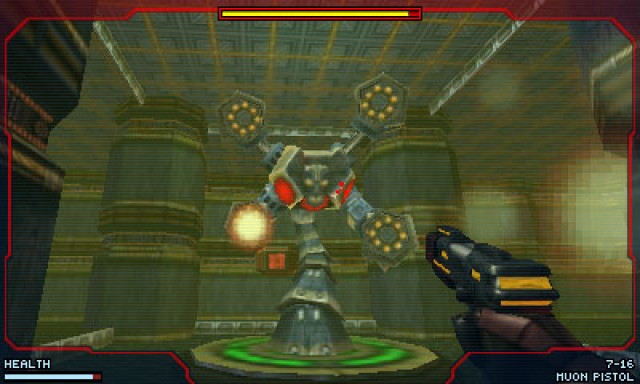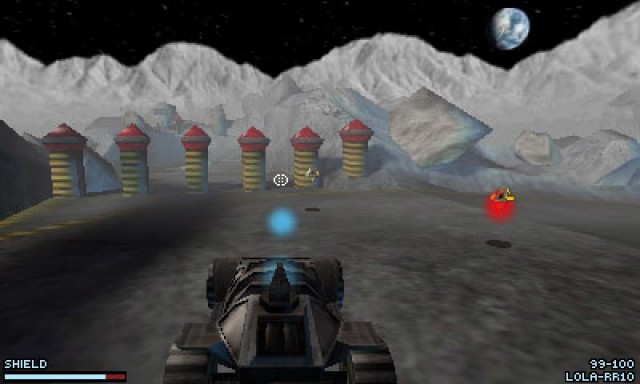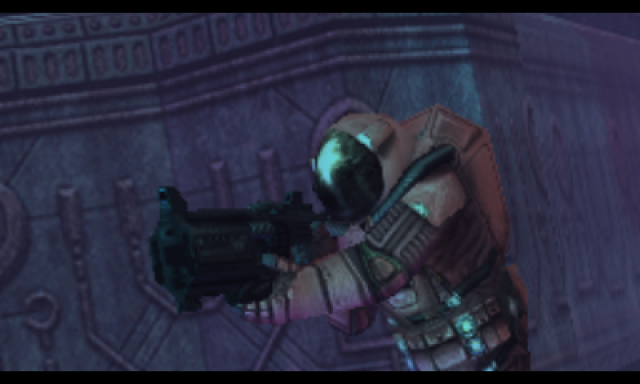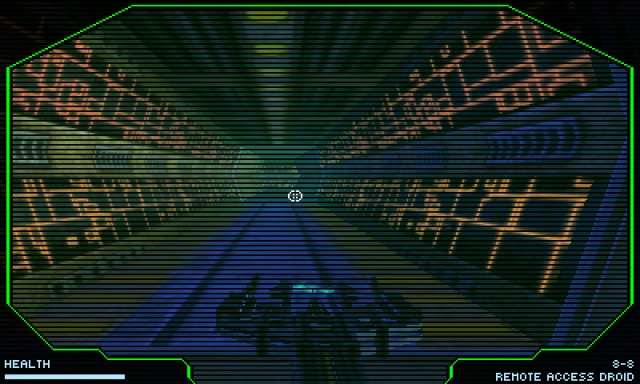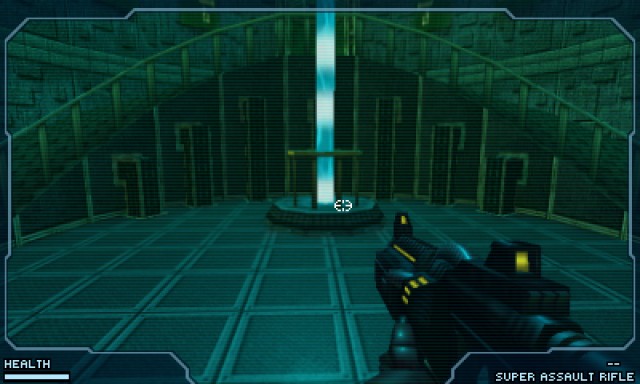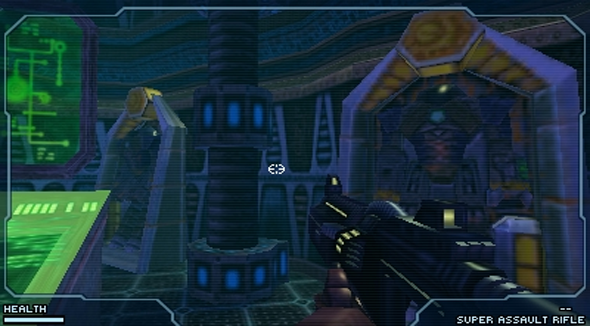When it came to realizing a fully authentic and functional first-person shooter, the Nintendo DS is probably among the least likely platforms that anyone would consider. The DS was fully capable of three-dimensional graphics and gameplay, and had more powerful specs than even the Nintendo 64 when it was pushed to its limits, but any three-dimensional gaming came at the cost of taking up a large chunk of the game card’s memory, which affected performance, visual integrity and other such factors to enough of a degree that a first-person shooter dedicated exclusively to the handheld felt like a foolish proposition. That’s before one considers the DS’s complete lack of a Control Stick, let alone the two that most FPS games on dedicated gaming hardware rely on, and the increased demands of the online multiplayer suite that FPS enthusiasts would no doubt demand.
Against all odds however, developer, Renegade Kid pulled it off. While the DS did see downscaled ports of Call of Duty games to act as functional, but unremarkable portable shooters, when one thinks of a defining FPS on the DS, they think of Moon. An FPS game that was completely designed from the ground up for the DS exclusively, Moon realized a surprisingly intense shooter experience that was atmospheric, challenging, and even surprisingly well-written. There was no multiplayer of any kind, online or otherwise, but it didn’t matter in that case, because Moon’s single-player gameplay alone was enough to make it one of the best under-the-radar hits in the entire DS library.
With Renegade Kid now becoming a particular indie powerhouse on the 3DS eShop, it seemed inevitable that they’d one day revisit one of their top DS offerings, from before indie gaming even took off for Nintendo platforms. Thus, we have Moon Chronicles, a full remake of Moon made as a digital download game for the 3DS, and still proudly exclusive to Nintendo’s current handheld. Moon Chronicles had a bit of an odd release schedule, since Renegade Kid decided to make it episodic, yet released the first episode on the 3DS eShop by itself in 2014. It wasn’t until this year that the other three episodes were released, finally completing the Moon remake. On top of that, Renegade Kid promises a ‘second season’ that expands upon the original story of Moon, seemingly planned for 2015, though they haven’t brought it up since the first ‘season’ was finally completely offered on the 3DS eShop.
All that aside though, how does Moon Chronicles stack up on an upgraded handheld, now that its first ‘season’ is complete? Well, the game is still a competent FPS, and definitely one of the only FPS games resembling a worthwhile option in the entire 3DS library, indie or otherwise. You could find a portable FPS that’s probably better on mobile platforms, or even the competing PS Vita, but if you’re dead set on a shooter for your 3DS, Moon Chronicles is likely the best way to fit the bill. Even if you just like atmospheric, well-written and claustrophobic action games, this is an experience that you will likely find better than you’d ever imagine the 3DS hardware was capable of.
Moon is easily one of the best showcases of the DS’s visual capabilities, and even on 3DS, the game is still a visual marvel. The improved graphics on 3DS smooth out some of the blocky pixelation that was noticeable in the former DS build, which ran at an uninterrupted 60fps clip even back in 2009. Naturally, the fast, flawless performance is maintained in the 3DS remake, even with the 3D Slider cranked to maximum.
Speaking of the 3D Slider, the 3D presentation is arguably the biggest thing added to Moon Chronicles, which, beyond the episodic setup, is more or less exactly the same gameplay experience as it was in its last-gen DS incarnation. The 3D is quite potent, and it makes the 3DS feel like the most natural home of this game. Due to Moon Chronicles’ heavy atmosphere, Renegade Kid made sure to emphasize the 3D effect considerably, and when it’s cranked to maximum, Moon Chronicles is positively engrossing!
On top of the 3D giving players an advantage when it comes to aiming and gauging the proximity of enemy shots that you don’t quite get in 2D, the expansive 3D presentation also makes stages stretch out and appear to envelop the player’s gaze, making the landscape of the various lunar complexes that you explore appear to come alive before you. The fact that Moon Chronicles is in first-person is all the better, since it sucks you into the experience at a level almost akin to VR, albeit very small handheld VR. If you’re playing on a 2DS, or prefer to flick off the 3D Slider, Moon Chronicles is still atmospheric and immersive, but you definitely get drawn into the experience more when you maximize the 3D effect on the 3DS handhelds.
The only drawback to the excellent graphics in Moon Chronicles is the pre-rendered FMV’s, which looked sharp on DS, but on 3DS, they look primitive and poorly-rendered. The FMV’s appear to be entirely unchanged from their DS renditions, meaning that they don’t display in 3D at all, and increasing the resolution of them to try and optimize them for the superior Top Screen of the 3DS/2DS handhelds just makes them look sloppy and blown-up. I wouldn’t go as far as to say that they’re ugly, but they definitely stick out like a sore thumb when stacked up against the rest of the superb visuals in this 3DS remake.
The only true casualty of the very ambitious graphics though, even in the 3DS remake, is the environments, which often consist of the same lifeless corridors. The odd time, you’ll get a chance to wander around on the surface of the moon proper, which looks fantastic for 3DS standards especially, but you do sadly spend most of Moon Chronicles settling for simple colour swaps of the same bland area design. That’s a very minor issue, but it is still one that players will notice, and this is one thing that sadly hasn’t improved, even in the 3DS remake.
Still, that’s not enough to disturb the intoxicating atmosphere of Moon Chronicles, which defies the limitations of its hardware to be more gripping than it has any right to be. It obviously doesn’t stack up to triple-A FPS visuals on current consoles and PC, and it’s still lagging behind even top-tier mobile devices and the PS Vita, but for 3DS standards, Moon Chronicles is a fantastic visual standout for the handheld, even in being a remake of a last-gen game.
Moon Chronicles has audio design that feels just as delightfully suffocating as its visuals. Not everyone is going to enjoy the static-y, heavy chords that comprise most of the music, but it’s definitely a unique and effective audio identity for the game. Even from the music, the sense of being isolated in a hostile lunar environment is perfectly captured, making Moon Chronicles feel both eerily grounded, and yet clearly unsettling and alien.
Sound effects are less impressive, and feel like they take a back seat to the music. The simple pew-pew effects of many of the guns feel almost hilariously toy-like, though effects like explosions that sound from destroyed enemies are acceptable, albeit a bit fuzzy. The best sound effects seem to come in when you hear the whirring of your remote-controlled drone, which does sound surprisingly lifelike, or when you interact with the various lunar machines. which feel as cold and nerve-wracking as everything else.
There’s no voice acting in Moon Chronicles, which is a let-down, though likely predictable to those who have already played Moon on DS. The great story would have benefited from voice acting for sure, but the rest of the audio, particularly the music, is powerful and well-realized enough to compensate for that. Plugging in headphones is definitely the best way to experience Moon Chronicles as well, where you can really get the most out of just how tense and chilling the game really is.
Moon Chronicles could be considered an adventure game as much as it is a first-person shooter, with the game definitely calling back more to the sensibilities of retro FPS games like Doom, rather than modern ones like Call of Duty. Unlike some of those retro shooters however, Moon Chronicles is still presented with modern production values, and does allow you to aim freely in a full three dimensions. Don’t expect something quite like Metroid however. Despite Chapter environments not limiting how you can explore them, the path of progression is still entirely linear.
Back in its DS incarnation, the game combined button inputs and Touch Screen manipulation to substitute for the complete lack of Control Sticks on the DS handhelds. With the addition of a Circle Pad on the 3DS and 2DS handhelds that now allows for better three-dimensional movement however, the controls are more flexible, and you can opt to ignore the Touch Screen as an input method if you so choose, particularly now that the Control Pad is assigned to switching weapons and tools, rather than movement.
On top of having a right-handed and left-handed control option, your control flexibility is also affected by which kind of handheld you’re playing on. Those playing on a 3DS XL or 2DS will have the most rigid control flexibility, being forced to aim with the X, Y, B and A Buttons or the Touch Screen in the default right-handed configuration, without any way around that. Those using a launch model 3DS however will have the option of utilizing a Circle Pad Pro peripheral to grant them a second Circle Pad, which they can use to aim in lieu of the face buttons or Touch Screen, in a setup that is bulkier and less portable, but definitely more comfortable and intuitive in a game with such extensive FPS elements. Likewise, shooting with the L button, or ZL on the Circle Pad Pro or New 3DS (XL), and interacting with the R or ZR Button, feels odd at first, but is smart in execution, since it utilizes the hand that isn’t tied up with the three-dimensional movement that’s necessitated on a quirky handheld like the 3DS/2DS.
Arguably the most intuitive and user-friendly way to experience Moon Chronicles however is on a New 3DS (XL). On top of offering especially quick loads and extra stable 3D for the game, the New 3DS (XL) lets you aim using the built-in C-Stick with the default right-handed controls, which isn’t quite as comfortable for your thumb as the Circle Pad Pro, but is definitely less of a hassle to work with over the Circle Pad Pro, especially since it lets you maintain the handheld’s portability without compromise.
Regardless, how exactly do you play the game? Well, players take control of Major Adam Kane, an operative in a task force designed to deal with extra-terrestrial matters, circa the year 2058. Across the four episodes, Kane moves between various secret underground installations located beneath the surface of Earth’s moon, with players using a map on the Touch Screen to make their way between various indicated points of interest. These can include consoles that must be activated, power connections that must be activated or disabled, and, sometimes, even a boss enemy that must be killed.
Of course, moving between objectives is hardly simple for Kane, who has any number of enemies to deal with as he makes his way around the underground installations. In the initial two episodes, you’ll primarily be dealing with automated turrets and sentry robots, but in the latter two episodes, more complex alien threats begin to emerge, and you start having to more effectively use the environment to strike back against smarter and deadlier foes.
Even given the more limited tech capabilities of the 3DS/2DS in contrast to competing platforms, the FPS-style combat in Moon Chronicles is very fast-paced and enjoyable. Aiming with the face buttons is a little twitchy at times, but using the stylus and Touch Screen feels surprisingly smooth and precise when aiming at your targets. The Circle Pad Pro’s weightiness is a drawback, but its second Circle Pad that can be used on launch model 3DS’s is definitely an extra comfy way to aim and shoot, even though the C-Stick on the New 3DS (XL) handhelds feels like the best balance between responsiveness and ergonomics, even if the speedy aiming demands in Moon Chronicles can be a bit hard on your thumb during extended play.
Making the enjoyable FPS elements all the better in Moon Chronicles is the fact that the handful of weapons that you’ll accrue throughout the game are all balanced remarkably well. The guns are simple variants on your usual pistol, sniper rifle, shotgun, grenade launcher, etc.. archetypes, but they all have their own advantages against the foes you’ll face, and with Kane having to forage for spare ammo by hoping that defeated enemies drop it, utilizing ammo management and adapting your weapon usage to react to new situations is a huge part of what makes the combat in Moon Chronicles so thrilling.
Less thrilling however is the disappointing lack of enemy variety. You have some rudimentary enemy types, from flying robot drones to automated turrets to alien sentries and the like, but sadly, the same drones that you initially shoot up at the very start of the first episode are still the same drones that you’ll be shooting up towards the end of the last, even though they do get a bit stronger and faster by then. Likewise, the satisfactory boss design also repeats itself on several occasions, with a unique final boss to at least close out the final Chapter in the final episode, but before that, the trio or so of boss designs is left to sustain all of the boss encounters in Moon Chronicles, merely given the illusion of upgrades by new field hazards and enemy henchmen on subsequent encounters. This is no doubt a side effect of the ambitious graphics and music taking up so much space in the initial DS game card of Moon, but it is still a let down in the 3DS remake, and one that’s hopefully fixed in the upcoming original second ‘season’ of Moon Chronicles.
Fortunately, even though environments are easy to navigate, especially with the handy Touch Screen map to consult throughout most of the game, there are a few hidden nooks and crannies to poke at, which can contain bonuses like health and weapon upgrades, as well as Alien Artifacts that can be used to unlock special challenge-based bonus missions, if you assemble a full set of three in one Chapter by finding enough ways to explore off the linear path. This is mainly done by use of the RAD, or Remote Access Drone, which Kane can dispatch with a quick tap of Down on the Control Pad. Using the RAD, players can move through tiny tunnels and sneak around foes (which can be stunned, but not destroyed by the drone), tracking down orange nodes that can be stunned to disable force fields that would otherwise prevent Kane from moving forward. The force field puzzles may feel like a nuisance to some, but in the later episodes especially, they’re wisely not overused, only showing up every so often in the interest of either hunting collectibles, or varying the gameplay beyond moving through corridors and shooting whatever sentries are in your way.
During the earlier episodes, you’ll also get a few chances to drive the LOLA-RR10, a lunar offroad vehicle armed with a semi-auto turret, which demands that you quickly and efficiently move and shoot between large stretches of enemies, while making your way towards the next underground installation. The LOLA sections take some practice, especially above the lowest ‘Rookie’ difficulty setting, but they’re quite engaging, and that’s why it’s a shame that the LOLA pretty well disappears past the second episode. The story justifies the omission of the LOLA, but this does make it smack of being a promising mechanic that was done halfway.
It should take you anywhere from 8-10 hours, depending on your difficulty setting, to completely beat Moon Chronicles, which will run you a combined $18 or so for the initial episode and the Season Pass that grants you the other three. You can download each episode individually for $4.50, but anyone interested might want to just get the Season Pass, since this was originally a combined retail package back in its DS incarnation, and even Renegade Kid ultimately didn’t seem to care too much about the episodic structure at this point, simply dumping the remaining three episodes together almost a year after the first one hit the 3DS eShop.
Given its price, and the fact that it doesn’t take too long to fully complete, Moon Chronicles is undeniably a tad on the expensive side in its first ‘season’. The fact that the game is entirely missing multiplayer doesn’t help matters, with the unlockable bonus missions being a decent, but underwhelming extra that many players won’t even bother to unlock.
If you’re undeterred by the somewhat high price of Moon Chronicles in its present complete form however, or can perhaps snag it during a discount period, the game that is here is nonetheless well-designed and gripping. The lack of multiplayer, or replay value of any kind, is a bummer, but if nothing else, your appetite for the next helping of episodes will certainly grow after seeing what kind of design foundation Renegade Kid already pulled off for this experience on the last-gen DS, which has only gotten better in its 3DS incarnation.
Given its humble portable design, you might be surprised to hear that Moon Chronicles actually has a pretty fantastic storyline! Sure, it’s not on the level of the Halo saga or anything, but the story that does arch around the initial four episodes is well thought-out, intriguing and contains quite a lot of lore. You can even find terminals throughout various points in the game that fill in the detailed backstory, which also help to enhance the atmosphere, by gradually peeling back a little more about just how twisted the moon’s secrets really are.
Without spoilers, protagonist, Major Adam Kane quickly ends up becoming one of the only survivors of an ill-fated operation to investigate a mysterious network of installations that were found underneath the moon’s surface in the year 2058. As Kane is directed around by both his established authorities, and the encoded transmissions of a mysterious stranger, he soon discovers that something is very wrong, and that Earth may actually be a much smaller, more helpless world than he ever imagined it was.
You’d never imagine that an FPS made for the 3DS (or, technically, the last-gen DS originally!) would boast a story that’s this surprisingly chilling and mature, but Moon Chronicles will definitely keep you on the edge of your seat. Against the odds, it effectively manages to justify Renegade Kid’s plans for all-new episodes, since the story does effectively set up a wider conflict, begging for a sequel offering that the original DS game never got. A pessimist might lament that Moon Chronicles ends in a cliffhanger, and seems to actively want players to stay tuned for a new ‘season’ of episodes that expand the content that was originally in the DS game, but this is honestly one of the better FPS plots to come from the video game industry in recent years. You would be very pleasantly surprised to experience it, especially if you’re already a fan of the sci-fi and/or horror genres.
Moon Chronicles may be a bit pricey, and it may repeat itself a bit too much with the enemies especially, but fans of FPS gaming that own a 3DS or 2DS should absolutely check it out, even with the disappointing absence of multiplayer that the 3DS remake still didn’t bother to include. The graphics, music and story are particular standouts nonetheless though, and even the gameplay is surprisingly competent, making an effective and engaging shooter that feels effectively tailored for the 3DS, yet undeterred by its hardware limitations.
If you’ve already played through Moon back during the DS era, then there’s little reason to double-dip on Moon Chronicles for now, even with its superb 3D makeover that 3DS users can enjoy. If you enjoyed Moon, the upcoming fully original episodes might be a good tipping point to check out the upgraded 3DS rendition of the game, but still, Moon Chronicles doesn’t feature anything that wasn’t already present in the original DS game, not counting the obvious addition of a 3D effect, and the episodic structure that so far adds nothing to the experience.
It’s a real testament to Moon however that the game still feels incredibly impressive in the subsequent hardware generation, still feeling very atmospheric and cool in its move to 3DS, despite the game largely being the exact same as it was on the last-gen DS, only now with a 3D presentation. Competing platforms may not have the limitations that are present in 3DS development, especially when it comes to FPS games, but even just taken as a technical achievement, Moon Chronicles is something very special that deserves to be appreciated, even if it does feel like its best offerings are still ahead of it.

